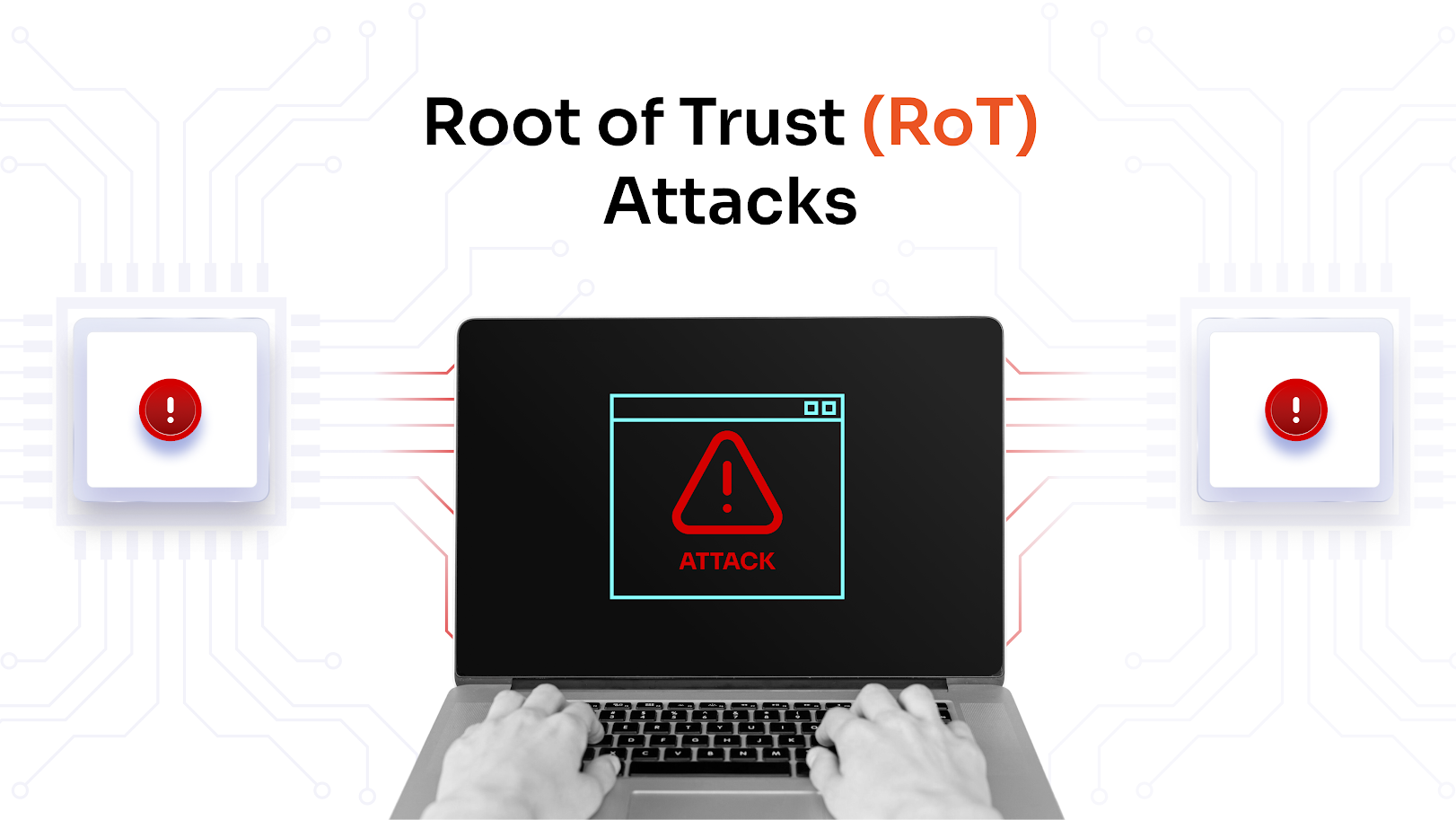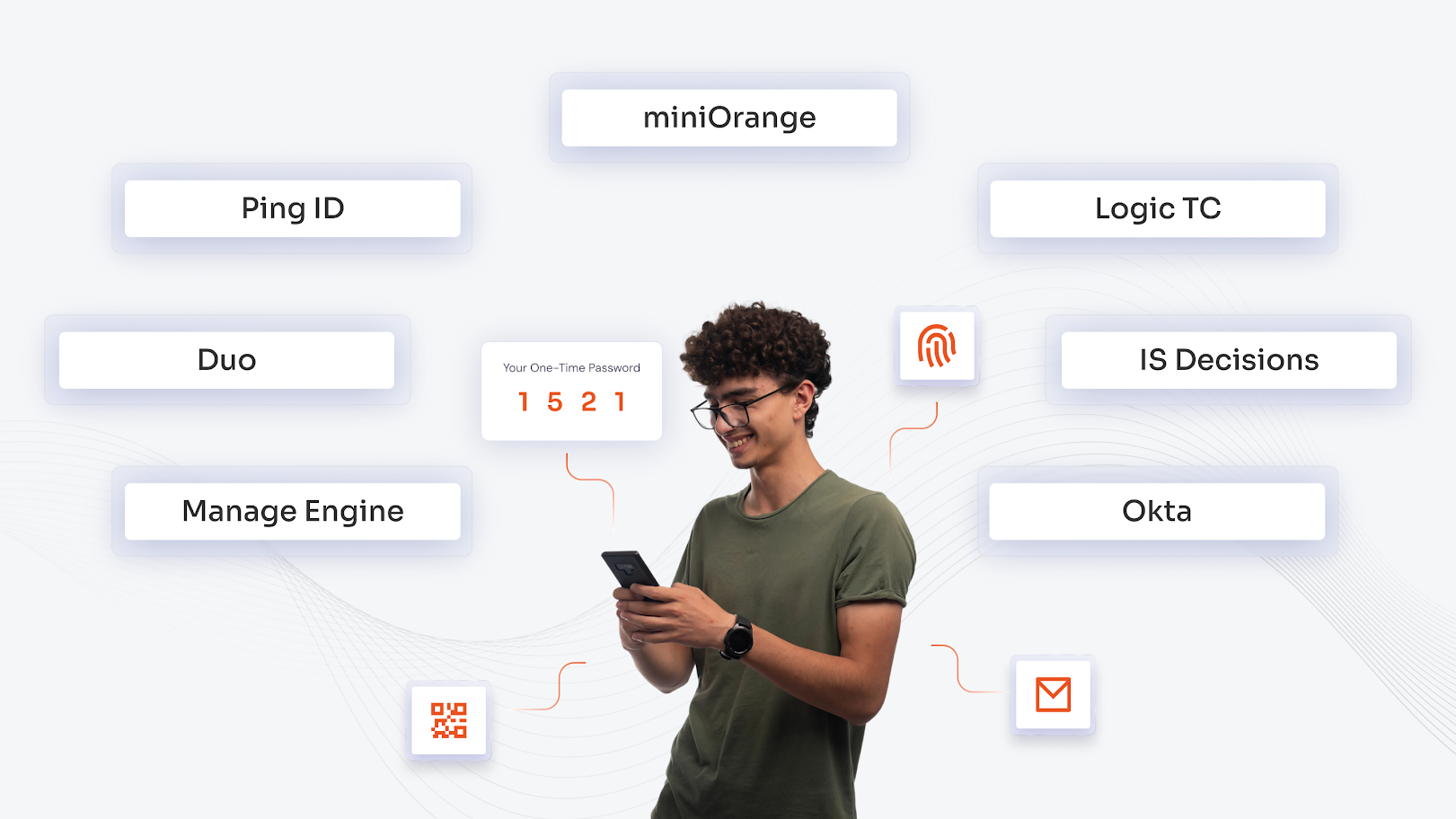The foundation is the heart of a long-lasting architecture or a system. In the cybersecurity field, this foundation is what we call the ‘Root of Trust (RoT).
Root of Trust is a fundamental aspect of hardware and software security, an initial element from which all other security components branch out. It makes sure that all other security elements can be trusted.
Suppose this root suddenly collapses or an attacker finds a way to breach it, then every layer from the top, including user credentials to encrypted data and from applications to operating systems, can be compromised without any alerts. This creates the most devastating form of cybersecurity threat - the Root of Trust (RoT) attacks.
For organizations, this is the fundamental risk that could destroy businesses, hamper their reputation, and lead to some of the worst forms of cybersecurity attacks.
What is the Root of Trust?
The Root of Trust (RoT) is a foundational security component in a computing system that can always be trusted. It typically exists as specialized hardware, firmware, or software designed to perform critical security functions such as generating, protecting, and securely storing cryptographic keys used for encryption, digital signatures, and authentication.
Because it is inherently trusted and tamper-resistant, the RoT serves as the secure anchor on which all other security processes in a device or system rely.
Root of Trust includes:
- Verified Boot rules that check the boot chain
- Firmware/Unified Extensible Firmware Interface (UEFI) to start the machine
- Pluton/Secure Enclave/Trusted Platform Module (TPM)
- System Trust Stores to decide which TLS certificates are valid
If any of the above is compromised by hackers, everything, including VPNs, Multi-Factor Authentication (MFA), browsers, and OS, can be put into chaos.
What are the Types of Root of Trust?
Typically, there are two types of RoT:
- Hardware-based RoT: Considered the most secure type of RoT, and is implemented to offer an immutable foundation. Hardware Root of Trust comprises TPM, a hardware chip present on a computer’s motherboard that amplifies security by safely storing cryptographic keys and validating the authenticity of the firmware and the operating system.
- Software-Based RoT: Software-based Root of Trust depends on the software system, making it more vulnerable and less trustworthy. It can be implemented in the bootstrap software as Read-Only Memory (ROM).
Why Attackers Target Root of Trust?
Cybercriminals are always on the lookout for points with the least resistance or maximum vulnerabilities. The entry points and the endpoints of the resources are guarded fairly well, so hackers pivot towards less visible attack points like the Root of Trust.
Reasons behind Root of Trust attacks are:
- Bypass Detection: Traditional security tools, such as network monitoring or antivirus, cannot easily detect cyberattacks happening at the hardware or firmware levels.
- Silent Infection: The RoT can be manipulated by validating malicious code as legitimate. An entire system can continue to function as if it were normal.
- Compromises Millions at Once: Exploiting one vulnerability in a widely used hardware chip can compromise millions of devices.
What are the Types of Root of Trust Attacks?
Types of Root of Trust (RoT) attacks revolve around targeting the foundational trust anchor that secures cryptographic keys, boot processes, firmware, and hardware components within digital systems. The main types of RoT are explained below:
1. Physical Tampering Attacks
Cybercriminals gain access to a device, and they manipulate or tamper with the hardware or firmware. This encompasses methods such as side-channel analysis, fault injection, or physically extracting keys stored in the TPMs.
2. Firmware Attacks
A firmware attack targets the firmware of a device, which is a software that tells the device (computer, smartwatch, or smartphone) how to operate when powered on.
In a firmware attack, cybercriminals spot vulnerabilities in the firmware and install malware, and take control of the entire hardware. Since conventional antivirus software rarely scans firmware or monitors it, such types of cyberattacks are difficult to detect.
3. Supply Chain Attacks
Supply chain attacks exploit the vulnerabilities of an organization, which could include internal or external vulnerabilities such as software, hardware, or business operations.
From a cybersecurity perspective, supply chain attacks mean manipulating dependencies such as open-source libraries or third-party vendors to get into the organization’s system.
4. Side-Channel Attacks
Side-channel attacks (SCA) are a security glitch in which hackers extract secrets from a system or a chip. This involves exploiting indirect leakage of information from Root of Trust elements such as execution time, supply current, and electromagnetic emission.
SCA doesn’t target a code directly; rather, it attempts to gather data or manipulate a program indirectly. Criminals break into cryptography by exploiting data accidentally leaked by a system.
For example, the Transient Electromagnetic Pulse Emanation Standard (TEMPEST), also known as the van Eck phreaking attack, is a type of SCA where the electromagnetic field radiation radiated by a computer is monitored to check the data before it is encrypted.
5. Man-in-the-Middle (MITM) Attacks
Man-in-the-middle attacks encompass intercepting any type of data between any two parties. In this case, it is between RoT and other system components such as applications, emails, or web browsers.
6. Key Extraction or Duplication Attacks
Key extraction or duplication attacks involve stealing, copying, or misusing the confidential cryptographic keys safeguarded by the RoT.
These keys are essential for user authentication, secure communication, and data protection in devices such as IoT, servers, and computers.
Why are RoT Attacks Difficult to Mitigate?
Mitigating RoT attacks can be notoriously difficult because of the following reasons:
- Complicated Systems/Architectures: Software developers, hardware engineers, vendors, and supply chains tend to overlap with each other, making accountability fragmented.
- Invisibility: These attacks occur below the line of visibility, so the monitoring tools cannot find them at first scan, until it’s too late.
- Cost of Mitigation: Replacing weak or compromised software and hardware is considered expensive compared to patching software glitches.
What are the Ways to Avoid Root of Trust Attacks?
Here are proven strategies to evade Root of Trust attacks for CISOs and the software development teams.
1. Credential Binding
- Disable conventional MFA methods such as email/SMS-based OTP that are not hardware-bound.
- Enable device-specific FIDO2 credentials in Identity Providers (IDP) such as Okta, Google Workspace, or Microsoft Entra ID.
- Store keys in Secure Enclave, TPM, or Pluton.
2. Boot and Firmware Security
- Make sure to enable Verified Boot and Secure Boot across all endpoints and systems.
- Stick to the NIST SP 900-193 framework: protect platform firmware from anomalies, detect abnormalities, and set up a recovery process.
- Enable measured boot and forward logs to a trusted attestation service such as Microsoft Defender ATP.
3. Certificate Management and Trust Store
- Continuously monitor for unauthorized certificates in trust stores such as Windows, Linux, or Mac.
- Schedule periodic trust store scans and quarantine any type of mismatches.
- Allow only admin-approved Certificate Authority (CA) installations.
4. Secure Key Management and Storage
Make sure to store sensitive credentials and keys in tamper-resistant, isolated hardware systems, safeguarded with software and physical security measures. This helps to defend against cloning or key extraction attacks.
5. Layered and Physical Security Mechanisms
Develop the Root of Trust hardware with side-channel attacks and physical tamper-resistance protections. Also, layered security helps to evade every point of failure.
How miniOrange Helps to Mitigate RoT Attacks?
With miniOrange’s Identity and Access Management (IAM) solutions, backed by Zero Trust principles, Root of Trust attacks can be easily avoided.
By implementing 15+ MFA solutions, along with context-aware access controls and continuous identity verification, miniOrange makes sure that only trusted, authenticated, and authorized users and devices gain access to the confidential resources.
This helps to reduce the root-level threats, such as the injection of malicious code into the firmware, extraction of cryptographic keys, and intercepting data between RoT and other devices.
Adopting miniOrange’s IAM solutions means shifting to a layered defense system and building a resilient foundation against the most sophisticated cyber risks, including Root of Trust attacks.
Set up an IAM 30-day free trial and find out more about the solutions, including competitive pricing options. You can also get in touch with us for more information.
Summing Up
Root of Trust attacks are silent killers; they’re sophisticated, making them a dangerous threat. They’re designed to strike at the foundation of our digital security stack, undermining the defense layers.
So, moving forward, it is imperative that organizations secure their systems at the chip level and develop resilient systems to fight against tampering at the base level.
After all, defending digital trust begins at the root level itself.
FAQs
What are the hardware features that make a Root of Trust secure?
This usually includes anti-tamper protection, isolated environments, resilience to side-channel attacks, and layered security measures to avert points of failure.
What are the benefits of Root of Trust?
Benefits of RoT are:
- Protection of sensitive data and preventing unauthorized access to the systems
- Supports regulatory compliance
- Offers a scalable base for adapting to new risks and ever-changing industrial needs.
How Does the Root of Trust Work?
The Root of Trust (RoT) is a secure and trusted starting point built into hardware or firmware that forms the foundation for all security operations in a device. When a device powers on, the RoT verifies that the firmware and software are authentic and have not been tampered with, ensuring that only trusted code runs.






Leave a Comment